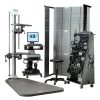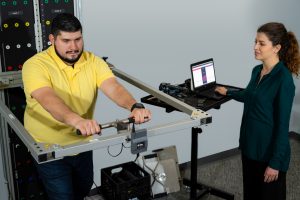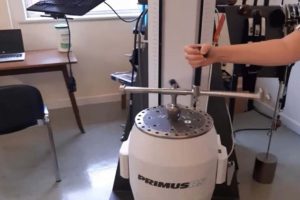
Successful Injured Worker Rehab Starts Before the Intake Interview
Treatment GuidelinesWhen working workers’ comp cases, we generally think of the intake interview as the first major step. But an effective intake interview takes preparation before you ever see the client. Performing a well-planned injured worker intake interview is key to getting the employee back to work safely and quickly.
When working workers’ comp cases, we generally think of the intake interview as the first major step. But an effective intake interview takes preparation before you ever see the client. Performing a well-planned injured worker intake interview is key to getting the employee back to work safely and quickly.
Before meeting with the client, you should review all the background information available. During the interview, you must ask the right questions, and listen carefully about the work environment. Use appropriate forms as guides throughout the process.
By the end, both you and your client will have a better understanding of the job demands and treatment plan for return-to-work. Let’s take a closer look at each step to performing an effective intake interview for injured workers.
Pre-interview prep
When starting a physical therapy program for an injured worker, you must use all relevant information available. Developing an effective treatment program starts with the referral information.
Before the interview, you should familiarize yourself with the case information that came with the referral. This may include any of the following items:
- Diagnosis– What is the diagnosis of this client’s injury?
- Previous interventions– Did the client have surgery? How long ago? What was the result? Have they participated in any therapy programs before?
- Job description– Knowing more about the client’s job during the interview goes a long way to show him/her that you are knowledgeable about the job requirements, and how their injury could impact their return to unrestricted work duties. However, the job description may actually be missing from the referral information. You may be able to get a job description from the employer at a later date.
- Referral goals– Why did this person get referred to your clinic? What is the desired outcome? Knowing if the goal is to return to the same job with the same employer, or the same occupation at a different employer, or a different occupation altogether, will help you develop your treatment plan and goals.
During the interview
Familiarizing yourself with the referral information is important. But it’s also important to learn all you can from the injured worker interview. The client interview helps you learn how the injury has affected the client. It also gives you the opportunity to make sure the client understands the purpose and goals of the treatment process.
When you sit down with the client, the above referral information will help guide you through the interview process. The interview should be conducted in a private area to minimize distractions for both you and the client, and to protect their privacy. It should be a one-on-one session, so you can focus all your attention on listening to the client
One important piece of information is the client’s personal perception of the injury. You will learn what the client’s goals are, and what they consider obstacles to these goals. While some questions will have a simple ‘yes or no’ response, make sure to also use open-ended questions that allow the client to express their thoughts.
Get the details about job demands
The interview should zero in on the client’s job demands. Rather than have them simply list job duties; ask them to describe a typical day at work from the time they arrive, to the time they leave. This will not only provide you with a list of job duties, but also help place them in the order they must be accomplished. As each task is listed, ask them for details about what they need to do to accomplish that task:
- What tools do you use for that activity?
- About how much does that tool/part weigh?
- What size are those parts?
- How many times per day do you need to do that task?
- How far do you need to carry that item?
- What is the position you are in for that activity?
If you do not already have the cause of injury information, this would also be a good topic to discuss further with the client. And finally, ask them what they think would be the most difficult or challenging task/s to return to work. Knowing their perception of their work ability will allow you to focus on their perceived needs – and help them improve their performance at those tasks.
In addition to occupational activities, injured worker interview questions should also address avocational activities for the treatment plan. Doing so will give the injured worker a well-rounded and personalized treatment experience.
Use the right forms
Having a set of forms to record the information is helpful. It will not only help you organize the information, but also serve as a reminder to you to make sure you cover all the details during the interview.
For example, you can use an injured worker intake interview form for recording general information about the case (diagnosis, hand dominance, age, contact information, etc.). Use a task analysis form to record job information and physical demands. You’ll also want to use a general physical examination form, and an informed consent form.
Finally, there should be a document that outlines what is expected of the client in the program, and what your role will be throughout this process. Both you and the client should sign off on this form as an agreement that you are working together to reach the goals you discussed with the client. Most physical and occupational therapy clinics will have these forms available, but if not, a quick Google search should do the trick.
Create the treatment plan
When you have collected all the necessary information from the referral and injured worker interview, it’s time to translate that into a detailed treatment plan and exercise program. With thorough preparation and interviewing, you will understand the needs and challenges that could arise during the rehab program. You will also have a better understanding of the physical demands of the job and will be able to provide further information to your client on the overall objectives of how to return to that job.
As with any physical or occupational therapy, your injured worker program will be more successful when you and your client fully understand the expectations of one another. Therefore, spending the additional time in an intake interview to gain information and build rapport will be one of the most important steps of a successful injured worker rehab program.





